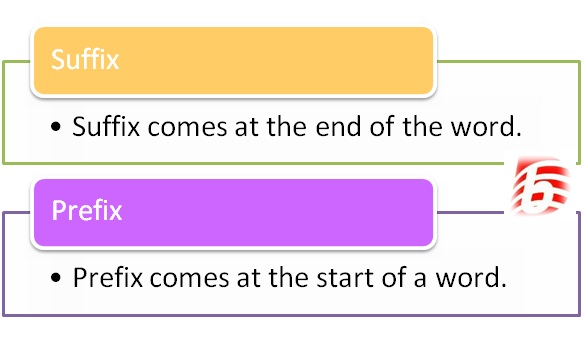Suffix vs Prefix
Prefixes and suffixes are vital to understanding morphology, and it’s essential to know the differences between them. Both are modifiers that, when attached to a word, change its meaning. Prefixes are attached at the beginning of a word, while suffixes are attached at the end. Together, they are known as affixes or simply additions to a root word. It’s crucial to note that both prefixes and suffixes cannot stand alone and rely entirely on the root word they are attached to. Sometimes, adding a word to the root word only modifies the meaning, but often, the meaning of the root word is entirely changed, and it becomes its antonym. For instance, adding “un-” to the word “tidy” creates “untidy,” its antonym. Prefixes and suffixes mainly come from the Latin language, and those who understand Latin find it easier to grasp the mechanism of these affixes. Many times, these affixes provide a clue to the word’s meaning.
Key Takeaways
- Suffixes and prefixes are known as affixes, and they modify or change the meaning of the root word.
- Prefixes are attached at the beginning of a word, while suffixes are attached at the end.
- Suffixes are divided into two main groups: inflectional suffixes and derivational suffixes.
What is a Suffix?
Suffixes often change the tense of the word, such as when “-ed” is added to the end. For example, adding “-ed” to “bond” creates “bonded,” the past tense of “bond.” In addition to “-ed,” there are several other suffixes used in the English language. All suffixes can be divided into two main groups: inflectional suffixes and derivational suffixes. Inflectional suffixes do not change the word’s meaning; for example, adding “-ed” to “bond” creates “bonded” without altering the original meaning of “bond.” It only changes the tense. Another example is adding “-s” to the end of singular nouns to make them plural, like “pigeon” and “pigeons.”
Derivational suffixes change the word’s meaning, creating a new word with a new meaning connected to the old one. Usually, the new word is a different part of speech. For example, the word “persuasion” is created by adding “-sion” to the verb “persuade.” “Persuade” is a verb, while “persuasion” is a noun, and their meanings are slightly different because one is a verb and the other a noun.
What is a Prefix?
As mentioned earlier, affixes often provide clues to a word’s meaning. For example, the word “preview” is made up of the prefix “pre” and the root word “view,” and “preview” refers to seeing something before the actual event takes place. Movie previews are held before the actual screening, and a pretest refers to a test before the test. This demonstrates that adding “pre” at the beginning of a word indicates an event occurring beforehand.
Other prefixes change the word entirely. When you add “de” before a word, it becomes its antonym, as in “decompose” and “destabilize.” The same effect occurs with “un.” When added before “comfortable,” a person feeling “uncomfortable” means they are not comfortable.
What is the difference between Suffix and Prefix?
- Suffixes and prefixes are collectively called affixes.
- Prefixes come at the start of a word, while suffixes come at the end.
- Both suffixes and prefixes modify or entirely change the meaning of the root word.
- Suffixes are divided into two main groups: inflectional suffixes and derivational suffixes.
